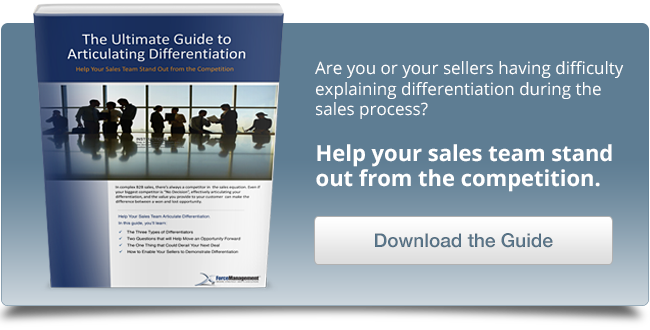Topics:
Inbound SalesSubscribe now and get the latest podcast releases delivered straight to your inbox.
 Earning trusted advisor status is pivotal for sellers who want to repeatedly hit their quotas, while winning repeat business and referrals. But, if you’ve spent any time in the selling world -- it’s easier said than done.
Earning trusted advisor status is pivotal for sellers who want to repeatedly hit their quotas, while winning repeat business and referrals. But, if you’ve spent any time in the selling world -- it’s easier said than done.
Here are five things you can do right now to earn trust with your buyer during the sales process.
Don't Be a Know It All
Two of the most frequent complaints buyers have with sellers are: 1) they don’t listen and 2) they don’t understand their business. When you’re calling on prospects, you as a seller are immediately at a disadvantage. Your potential buyers assume you’re going to waste their time. We call it “The Seller Deficit Disorder.”
Go in curious.
A seller who goes in thinking he or she knows what the prospect needs will always be seen as just an order-taker, and will never earn trusted advisor status.
Don’t assume you know your buyer’s biggest business challenges, or that this prospect is like your other potential buyers.
Ask questions, and you’ll be one step closer to earning trust with your potential buyer.
Understand Your Buyer’s Problems
Remember, there is no value without a customer problem. It’s your job as a seller to:
- Uncover your customer pain points.
- Understand the impact those issues are having on the business.
Deals are won and lost on effective discovery. You can’t demonstrate your value if you don’t know the problem your customer is trying to solve. If you want to earn trust, you have to ask questions that will prompt prospects to verbalize their pain in a way that gives you an opportunity to demonstrate how you can help.
Helping your prospects articulate their needs will automatically give you better knowledge about that prospect. An effective discovery process creates trust with your prospect because he/she will appreciate your willingness to understand their pain points.
Help Your Buyer See the Bigger Impact
Your buyers likely have a laundry list of needs, and they want tailored solutions. Help them cross off each bulleted problem by explaining exactly how your product will satisfy each of their critical problems. Be more than just another vendor. Earn trust by helping your prospect see the impact your solution will have on their business. Articulate the value of your solution and tie it directly to their largest business needs. If potential buyers can’t see the tie, your product may seem like more than what they need.
Remember, as a seller you are delegated to the person you most sound like. Speak in terms of large business issues, and you will be dealing with higher-ups that have more discretionary income to fund your solution. Even if you can’t get to the key decision maker initially, you can help your key contact show how one purchase can influence a pressing business issue. You’ll earn trust because you’ll be helping your prospect tackle a critical business challenge.
Be Audible-Ready
Being audible-ready means just like an NFL quarterback, you can adjust quickly. If you’re an audible-ready seller, you can morph the sales conversation based on your buyer needs.
When you start a customer conversation, you don’t always know where the conversation is going to lead. There are several on-ramps to any sale, and you’ll likely have to talk to more than one decision maker. As a seller, your goal is to consistently demonstrate the value of your solution in terms of positive business outcomes. Being audible-ready means you articulate value no matter the person you’re talking to and no matter where they steer the conversation.
Audible-ready sellers speak to prospects in a way that demonstrates their relevancy. That’s why they earn trust. Their conversations are always based on buyer needs, and prospects can clearly see how the seller can impact their business, they earn that coveted trusted advisor status.
Show Credibility with Testimonials
Customer testimonials are an asset to any sales conversation. Providing tangible points of reference on how your solution produces the results you promise will strengthen your message. You can talk about how you are better than your competitors all day long, but putting evidence behind those claims helps your potential buyers see the positive business outcomes they can achieve through your solutions. Effective proof points speak to the priorities and the perspective of your customer. They help you earn credibility and trust with your buyer.
Rachel Clapp Miller is the Assistant Marketing Director at Force Management. Force Management specializes in sales transformations that help B2B sales organizations increase revenue, improve sales margins and gain market share. Follow them on Twitter: @ForceMGMT and on LinkedIn.

Free Assessment:

